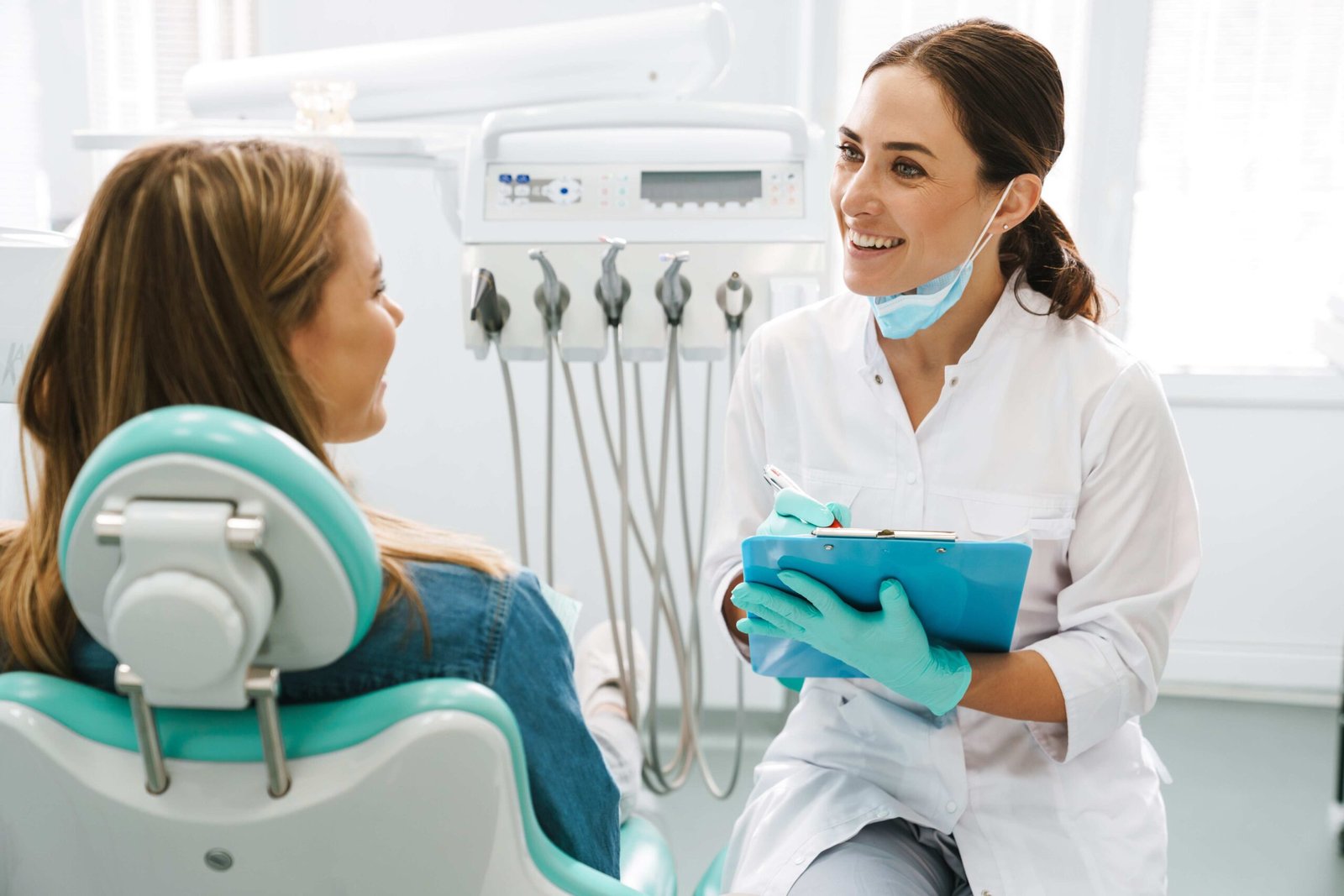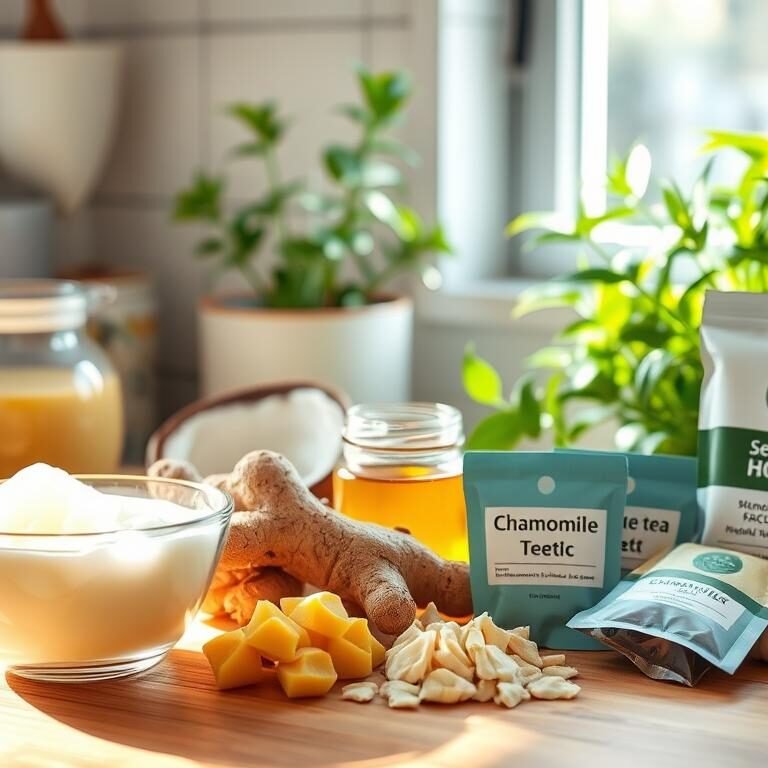Table of Contents
Understanding the Importance of Pain Management in Dental Procedures

Proper pain management is an essential aspect of dental procedures, ensuring that patients have a comfortable and stress-free experience. Dental treatments often involve invasive procedures, such as drilling, extracting teeth, or placing dental implants, which can cause varying degrees of discomfort. By effectively managing pain, dentists can minimize patient anxiety and apprehension, ultimately leading to better treatment outcomes.
One of the key benefits of pain management in dental procedures is that it allows patients to receive the care they need without experiencing unnecessary pain or discomfort. Dentists employ a range of techniques to achieve this, including the use of local anesthetics, sedation, and topical numbing agents. These methods help to block or numb the pain receptors, ensuring that patients do not feel the sensation of pain during the procedure.
By focusing on pain management, dentists can also help to alleviate patient anxiety and dental phobia. Many individuals experience fear or apprehension when visiting the dentist, often due to previous negative experiences. Implementing effective pain management strategies can help to build trust and confidence in patients, making them more likely to seek regular dental care. This can have significant long-term benefits for their oral health and overall well-being.
In conclusion, understanding the importance of pain management in dental procedures is crucial for both patients and dentists. By prioritizing pain control, dentists can ensure that patients have a comfortable and positive experience during their dental treatments. This not only improves patient satisfaction but also supports better treatment outcomes and long-term oral health.
Choosing a Qualified and Experienced Dentist

When it comes to choosing a dentist, it is crucial to select someone who is not only qualified but also experienced in providing comprehensive oral care. Your dentist should possess the necessary skills, knowledge, and expertise to handle a wide range of dental procedures and address your specific needs.
A qualified and experienced dentist will have undergone rigorous training, education, and clinical practice to ensure they stay up-to-date with the latest advancements in dental techniques, technologies, and treatments. They will have completed dental school and obtained the necessary licenses and certifications to legally practice dentistry. Furthermore, they may have pursued continuing education or specialized training in areas such as cosmetic dentistry, dental implants, orthodontics, or pediatric dentistry to further enhance their skills and broaden their scope of practice.
By choosing a qualified and experienced dentist, you can have peace of mind knowing that you are in capable hands. Such a dentist will not only provide you with top-notch dental care but also guide you through the treatment process, ensuring your comfort, safety, and satisfaction. Whether you require routine check-ups, preventive care, restorative treatments, or cosmetic enhancements, a qualified and experienced dentist will personalize your treatment plan to address your unique dental needs and goals.
Discussing Your Anxiety and Pain Tolerance with Your Dentist

Discussing your anxiety and pain tolerance with your dentist is a crucial step in ensuring a comfortable and stress-free dental experience. Dentists are trained to understand and address their patients’ concerns, including anxiety and pain sensitivity, so don’t hesitate to open up and communicate your feelings. By discussing your anxiety and pain tolerance with your dentist, you create an opportunity for them to tailor their approach and provide you with the best possible care.
Your dentist will likely ask you about your anxiety levels and pain tolerance during your initial consultation. This information allows them to devise a treatment plan that takes these factors into consideration. Additionally, they can suggest strategies to help ease your anxiety and manage any potential discomfort, such as deep breathing exercises, distraction techniques, or the use of sedation options. Remember, your dentist is here to help, and by discussing your anxiety and pain tolerance with them, you can work together to ensure a positive dental experience.
Exploring Sedation Options for a Comfortable Dental Experience
Sedation options can play a crucial role in ensuring a comfortable dental experience for patients who may have anxiety or fear about dental procedures. By exploring the various sedation options available, you and your dentist can determine the most suitable approach to help you relax during your treatment.
One common sedation option is nitrous oxide, also known as laughing gas. This colorless and odorless gas is administered through a mask placed over your nose, allowing you to inhale it during the procedure. Nitrous oxide induces a feeling of relaxation and calmness, reducing anxiety and making the dental experience more pleasant.
Another sedation option is oral sedation, which involves taking a prescribed medication prior to your appointment. This medication helps to induce a state of relaxation and can vary in strength depending on the level of anxiety or fear experienced. Under oral sedation, you can remain conscious throughout the procedure but will feel deeply relaxed and at ease. Your dentist will closely monitor your vitals to ensure your safety and well-being.
Properly Numbing the Treatment Area for Pain-Free Dental Work
Numbing the treatment area is a critical step in ensuring a pain-free dental experience. By properly numbing the area, dentists can perform necessary procedures with minimal discomfort for the patient. Local anesthesia is often used to achieve this goal.
Local anesthesia works by blocking the nerve signals in the treatment area, effectively numbing it and preventing pain sensations. This is typically administered through an injection, and the effects can last for a few hours, depending on the type and dosage used. It is important for dentists to carefully determine the appropriate amount of anesthesia needed to numb the specific area being treated.
In addition to local anesthesia, dentists may also use topical anesthetics to reduce discomfort during the injection process. These numbing gels or sprays are applied to the gum tissue before the injection, helping to minimize any pain or discomfort associated with the needle.
By combining the use of local anesthesia and topical anesthetics, dentists can ensure that their patients receive pain-free dental work. This approach allows for a smoother and more comfortable experience, reducing anxiety and allowing patients to maintain a positive attitude towards dental treatments.
Here’s a detailed guide on properly numbing the treatment area for pain-free dental work:
| Properly Numbing the Treatment Area for Pain-Free Dental Work | Guidelines |
|---|---|
| 1. Use Topical Anesthetic | – Apply a topical anesthetic gel or spray to the treatment area before administering injectable anesthesia. |
| – Topical anesthetics numb the surface tissues and help minimize discomfort during the injection process. | |
| 2. Administer Local Anesthesia | – Use a small-gauge needle to inject local anesthetic solution (e.g., lidocaine) into the gum tissue near the treatment site. |
| – Inject slowly and steadily to minimize discomfort and allow the anesthetic to take effect. | |
| 3. Utilize Dental Nerve Blocks | – Perform dental nerve blocks to numb larger areas of the mouth, such as the lower jaw or entire quadrant, for extensive procedures. |
| – Dental nerve blocks provide profound anesthesia and are commonly used for procedures like extractions or root canals. | |
| 4. Allow Sufficient Time for Numbing | – Wait for the local anesthetic to take full effect before beginning the dental procedure. |
| – The onset of anesthesia typically takes a few minutes, so be patient and ensure the patient is adequately numb before proceeding. | |
| 5. Communicate with the Patient | – Prioritize open communication with the patient to address any concerns or questions about anesthesia and pain management. |
| – Encourage patients to report any discomfort during the procedure so adjustments can be made as needed. | |
| 6. Consider Sedation Options | – For patients with dental anxiety or extensive treatment needs, consider offering sedation options such as nitrous oxide (laughing gas) or oral sedatives. |
| – Sedation helps relax anxious patients and provides additional pain relief during dental procedures. | |
| 7. Monitor Patient Comfort Throughout the Procedure | – Continuously assess the patient’s comfort level and response to anesthesia during the dental procedure. |
| – Make adjustments to anesthesia techniques or dosage as necessary to ensure pain-free treatment. | |
| 8. Provide Post-Procedure Care Instructions | – Instruct patients on post-procedure care, including how to manage any residual numbness, avoid biting or chewing on the numb area, and manage pain or discomfort with prescribed medications. |
| – Advise patients to contact the dental office if they experience prolonged numbness, severe pain, or other concerning symptoms after the procedure. |
The Role of Local Anesthetics in Minimizing Pain during Dental Procedures
Local anesthetics play a crucial role in minimizing pain during dental procedures. These medications are specifically designed to temporarily block nerve signals in the treatment area, numbing the region and ensuring a comfortable experience for the patient. By preventing the transmission of pain signals to the brain, local anesthetics allow dentists to perform necessary procedures without causing significant discomfort or distress to the patient.
One of the key benefits of local anesthetics is their targeted action. These medications are typically administered directly at the site where the treatment will be performed, ensuring precise numbing of the specific area. This means that patients can undergo dental procedures without experiencing pain or sensitivity, even if the surrounding tissues may still be able to sense touch or pressure. This localized effect allows for focused and efficient dental work, enhancing both the comfort of the patient and the precision of the treatment.
Moreover, local anesthetics offer an additional advantage for patients with dental anxiety. Fear or anxiety about dental procedures can be overwhelming, often causing patients to avoid much-needed dental care. However, with the use of local anesthetics, patients can feel at ease knowing that their pain will be effectively managed during the procedure. This can help alleviate anxiety and promote a more positive and relaxed dental experience, encouraging individuals to prioritize their oral health without unnecessary fear or apprehension.
In conclusion, local anesthetics are invaluable tools in modern dentistry, allowing dentists to minimize pain and discomfort during various procedures. The targeted and localized numbing effect of these medications ensures that patients can receive necessary treatments without experiencing undue pain or anxiety. By understanding the role of local anesthetics in dental care, patients can feel more confident in seeking dental procedures and maintaining their oral health.
Utilizing Topical Anesthetics to Reduce Discomfort during Injections
Topical anesthetics play a crucial role in reducing discomfort during dental injections. When applied to the treatment area before the injection, these anesthetics numb the surface tissues, making the injection process more tolerable. They achieve this by blocking the nerve pain signals from reaching the brain, resulting in a significantly reduced sensation of pain.
One of the primary advantages of topical anesthetics is their quick action. Within minutes of application, they begin numbing the area, ensuring that patients experience minimal pain during injections. Additionally, topical anesthetics allow for a more controlled and precise application, ensuring that the numbing effect is localized to the targeted area, further adding to patient comfort. By implementing the use of topical anesthetics, dentists can create a more relaxed and pain-free environment for their patients, thereby effectively addressing a common concern associated with dental treatments.
Using Advanced Technology for Precise and Efficient Dental Treatments
Using advanced technology in dental treatments has revolutionized the field, offering precision and efficiency like never before. These cutting-edge technologies have transformed the way oral health issues are diagnosed, treated, and managed, providing patients with improved outcomes and a more comfortable experience.
One advancement worth mentioning is the use of digital imaging techniques, such as cone beam computed tomography (CBCT). This technology allows dentists to obtain detailed three-dimensional images of the teeth, jaws, and surrounding structures, providing invaluable information for accurate diagnoses and treatment planning. With CBCT, dentists can identify potential problems early on, leading to more effective and targeted interventions. This not only ensures better clinical outcomes but also reduces the need for invasive procedures, minimizing patient discomfort and recovery time.
Another game-changing innovation in dental technology is the use of laser therapy. Lasers are now utilized in a variety of dental procedures, including gum disease treatment, cavity removal, and teeth whitening. Laser therapy offers numerous advantages, such as precise tissue targeting, reduced need for anesthesia, and faster healing times. The focused nature of laser treatment minimizes damage to healthy tissues, making it a more comfortable and conservative option for patients.
In conclusion, the integration of advanced technology in dental treatments has greatly enhanced the precision and efficiency of procedures, ultimately leading to improved patient outcomes. From digital imaging techniques like CBCT to the use of lasers in various dental procedures, these advancements have transformed the field of dentistry. Not only do they provide dentists with more accurate diagnostic information and treatment options, but they also deliver a more pleasant experience for patients, ensuring minimal discomfort and faster recovery times.
Practicing Relaxation Techniques to Ease Dental Anxiety and Pain
Practicing relaxation techniques can be incredibly helpful in easing dental anxiety and reducing pain during dental procedures. Dental anxiety is a common issue that many people face, often leading to avoidance of necessary dental treatments. However, by incorporating relaxation techniques into your dental routine, you can alleviate anxiety and make your dental experience more comfortable.
One effective relaxation technique is deep breathing exercises. By focusing on your breath and taking slow, deep breaths, you can activate your body’s relaxation response and lower stress levels. This simple technique can be done before, during, and after your dental appointment to promote a sense of calm and relaxation. Additionally, progressive muscle relaxation can be beneficial in reducing muscle tension and overall anxiety. This technique involves tensing and releasing each muscle group in your body, starting from your toes all the way up to your head. By consciously releasing tension, you can further enhance your relaxation and minimize discomfort.
Incorporating relaxation techniques into your dental routine not only benefits your mental and emotional well-being but also helps manage pain during dental procedures. By reducing tension and anxiety, you can experience a more relaxed state, which can make it easier for your dentist to administer treatment. Furthermore, when you are in a relaxed state, your body releases fewer stress hormones, which can lower your perception of pain. By actively practicing relaxation techniques, you can create a more positive and comfortable dental experience for yourself.
Maintaining Good Oral Hygiene to Avoid Painful Dental Issues
Good oral hygiene is crucial for maintaining healthy teeth and gums and preventing painful dental issues. By implementing simple and effective oral care practices, you can significantly reduce your risk of experiencing dental pain and discomfort.
Regular brushing and flossing are the foundation of good oral hygiene. Brushing your teeth twice a day with fluoride toothpaste helps remove plaque and bacteria that can lead to tooth decay and gum disease. It is important to use a soft-bristled toothbrush and gentle, circular motions to clean all surfaces of your teeth and along the gumline. Don’t forget to replace your toothbrush every three to four months or sooner if the bristles become frayed.
Flossing complements brushing by removing plaque and food particles from areas that your toothbrush may not reach, such as between your teeth and under the gumline. This helps prevent gum disease and cavities. Make sure to use a gentle sawing motion and glide the floss along the sides of each tooth. If you struggle with traditional floss, consider alternative options like interdental brushes or water flossers.
In addition to brushing and flossing, using an antibacterial mouthwash can help eliminate bacteria and freshen your breath. It is also important to maintain a balanced diet and limit sugary and acidic foods and drinks, as they can contribute to tooth decay and erosion. Regular dental check-ups and professional cleanings are essential for detecting and addressing any potential issues before they become painful and more complicated to treat.
By making oral hygiene a priority in your daily routine and combining it with regular dental care, you can significantly reduce your risk of painful dental issues and maintain a healthy smile. Stay committed to these practices, and your teeth and gums will thank you with a pain-free and vibrant oral health.
Following Post-Treatment Instructions for a Smooth Recovery Process
Following post-treatment instructions is crucial for ensuring a smooth recovery process after a dental procedure. These instructions are provided by your dentist to help you heal properly and minimize any discomfort or complications. By diligently following these guidelines, you can enhance the success of your treatment and enjoy a faster recovery.
One of the most common instructions after dental procedures is to avoid eating or drinking for a designated period. This is important because it allows the treated area to heal undisturbed and reduces the risk of dislodging any restorations or stitches. Additionally, your dentist may recommend specific dietary restrictions, such as avoiding hard, chewy, or spicy foods, to prevent irritating or damaging the treated area. Remember, adhering to these dietary guidelines can significantly contribute to a smooth recovery and minimize the chance of complications.
Another essential post-treatment instruction is to take any prescribed medications as directed by your dentist. These medications may include antibiotics to prevent or treat infections, analgesics to manage pain, or anti-inflammatory drugs to reduce swelling and discomfort. It is crucial to follow the prescribed dosage and frequency of taking these medications to maximize their effectiveness and aid in your recovery. If you have any concerns or experience adverse reactions to the prescribed medications, be sure to contact your dentist immediately for further guidance. By adhering to this instruction, you can minimize pain, inflammation, and the risk of infection, ensuring a smoother and more comfortable recovery process.
Seeking Professional Advice for Managing Dental Pain at Home
When it comes to managing dental pain at home, seeking professional advice is crucial. While over-the-counter pain relievers can provide temporary relief, they do not address the root cause of the pain. A qualified dentist can help identify the underlying issue and provide appropriate guidance to alleviate the pain effectively.
A professional dentist will assess your dental history, examine your teeth and gums, and may conduct diagnostic tests to diagnose the cause of the pain accurately. Based on the findings, they can recommend specific treatments or home remedies to manage the pain. These may include using warm saltwater rinses, applying cold compresses, or prescribing medicated mouth rinses or gels. By seeking professional advice, you can ensure that the pain is properly addressed and that any potential complications are prevented from arising.
Remember, managing dental pain at home is not a substitute for professional dental care. It is essential to schedule regular check-ups with your dentist to maintain good oral health and prevent future dental problems. Following their advice and guidance will not only help manage pain at home but also contribute to your overall dental well-being. So, if you’re experiencing dental pain, don’t hesitate to seek professional advice to find timely relief and optimal oral health.
Emphasizing the Importance of Regular Dental Check-ups for Preventive Care
Regular dental check-ups play a crucial role in preventive care and maintaining optimal oral health. These visits to the dentist enable early detection and intervention of any potential issues, preventing them from escalating into more serious and painful conditions. During these check-ups, dentists thoroughly examine your teeth, gums, and mouth for signs of decay, gum disease, oral cancer, and other dental problems.
Through professional cleaning, dentists remove plaque and tartar buildup, which if left untreated, can lead to cavities, gum disease, and even tooth loss. Regular check-ups also involve X-rays, allowing dentists to identify hidden dental problems such as impacted teeth or jawbone deterioration. Moreover, dentists use these appointments to educate patients on proper oral hygiene practices and provide personalized advice on maintaining a healthy smile. By catching dental problems early on and implementing preventive treatments, regular check-ups help you avoid unnecessary pain, discomfort, and costly dental procedures in the long run.
In addition to the physical benefits, regular dental check-ups also contribute to your overall well-being. Poor oral health has been linked to various systemic conditions, including heart disease, diabetes, respiratory infections, and adverse pregnancy outcomes. By prioritizing regular check-ups, you are not only safeguarding your dental health but also investing in your overall health and lowering the risk of these potentially serious health complications. Remember, prevention is always better than cure, and regular dental check-ups are at the heart of preventive care, ensuring your teeth and gums stay healthy and pain-free.
Why are regular dental check-ups important for preventive care?
Regular dental check-ups allow dentists to detect early signs of dental issues, such as cavities or gum disease, before they become more serious and painful. It helps maintain good oral health and prevents the need for extensive treatments in the future.
How often should I schedule dental check-ups?
It is generally recommended to visit the dentist every six months for a routine check-up and cleaning. However, the frequency may vary depending on your oral health condition and any specific concerns your dentist may have.
How can pain management be ensured during dental procedures?
Pain management during dental procedures can be achieved through various techniques such as local anesthesia, sedation options, and the use of topical anesthetics. Dentists are trained to prioritize patient comfort and will discuss pain management options before any procedure.
Can I choose my dentist based on their experience and qualifications?
Absolutely. It is crucial to choose a qualified and experienced dentist who has the necessary skills to provide quality dental care. You can research dentists in your area, read reviews, and consider recommendations from family and friends to make an informed decision.
How can I discuss my anxiety and pain tolerance with my dentist?
It is essential to have open communication with your dentist regarding any anxiety or pain tolerance concerns. Before any procedure, you can discuss your fears and discomfort levels with your dentist, who can then tailor the treatment plan accordingly.
What are some relaxation techniques that can help ease dental anxiety and pain?
Some relaxation techniques that can help ease dental anxiety and pain include deep breathing exercises, listening to calming music, using visualization techniques, or practicing mindfulness. Discussing these options with your dentist can help determine which technique might work best for you.
How can I maintain good oral hygiene to avoid painful dental issues?
Maintaining good oral hygiene involves brushing your teeth twice daily, flossing regularly, using mouthwash, and visiting the dentist for regular check-ups. By practicing these habits, you can prevent dental issues such as cavities, gum disease, and toothaches.
What should I do to ensure a smooth recovery process after dental treatment?
Following post-treatment instructions provided by your dentist is crucial for a smooth recovery process. This may include taking prescribed medications, avoiding hard or sticky foods, maintaining good oral hygiene, and attending any follow-up appointments as recommended.
When should I seek professional advice for managing dental pain at home?
If you experience severe or persistent dental pain at home, it is important to seek professional advice from your dentist. They can assess the cause of the pain and provide appropriate guidance or prescribe medication to alleviate it.
Can dental check-ups really prevent painful dental issues?
Yes, dental check-ups play a vital role in preventing painful dental issues. Regular check-ups allow dentists to identify and address any dental problems early on, reducing the risk of developing more severe and painful conditions.











